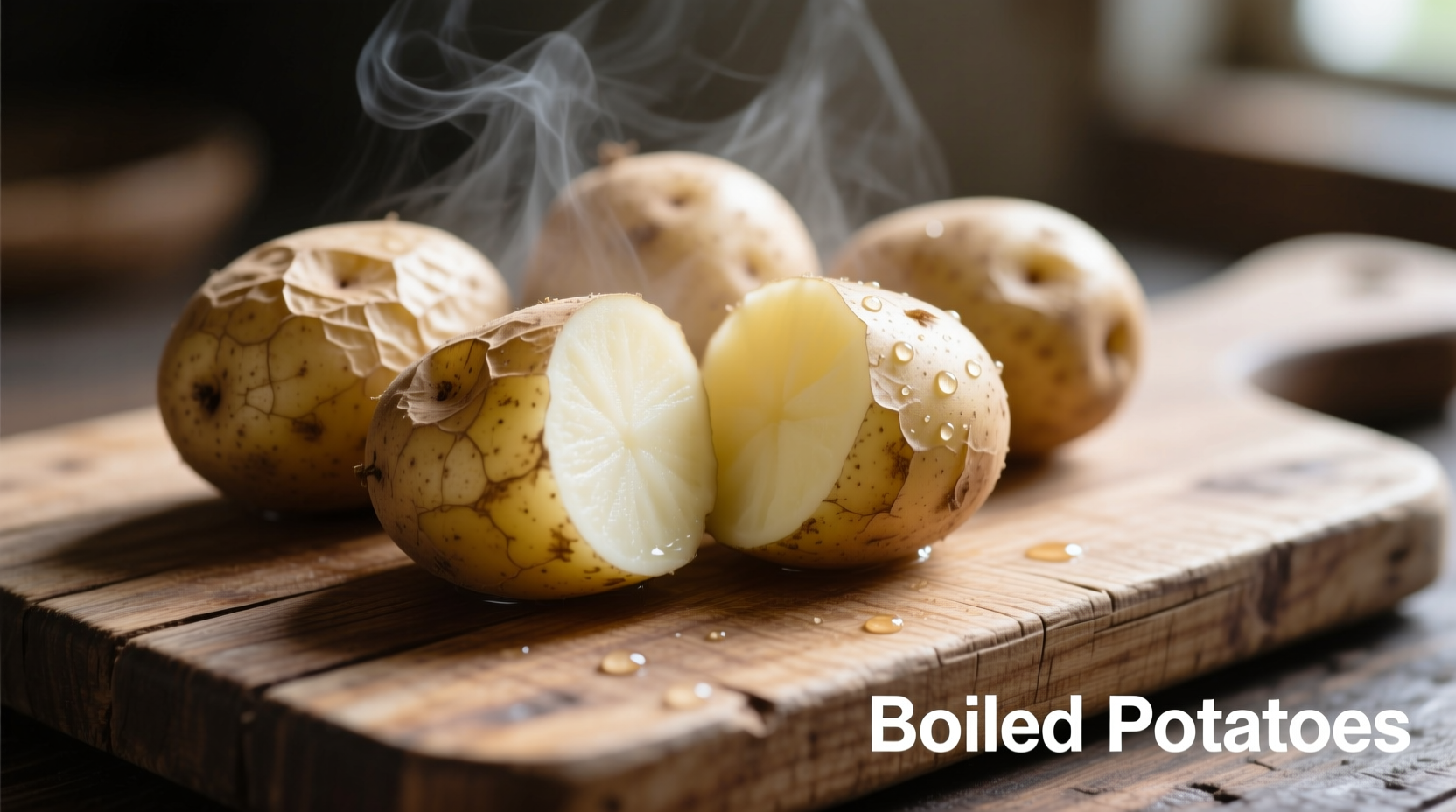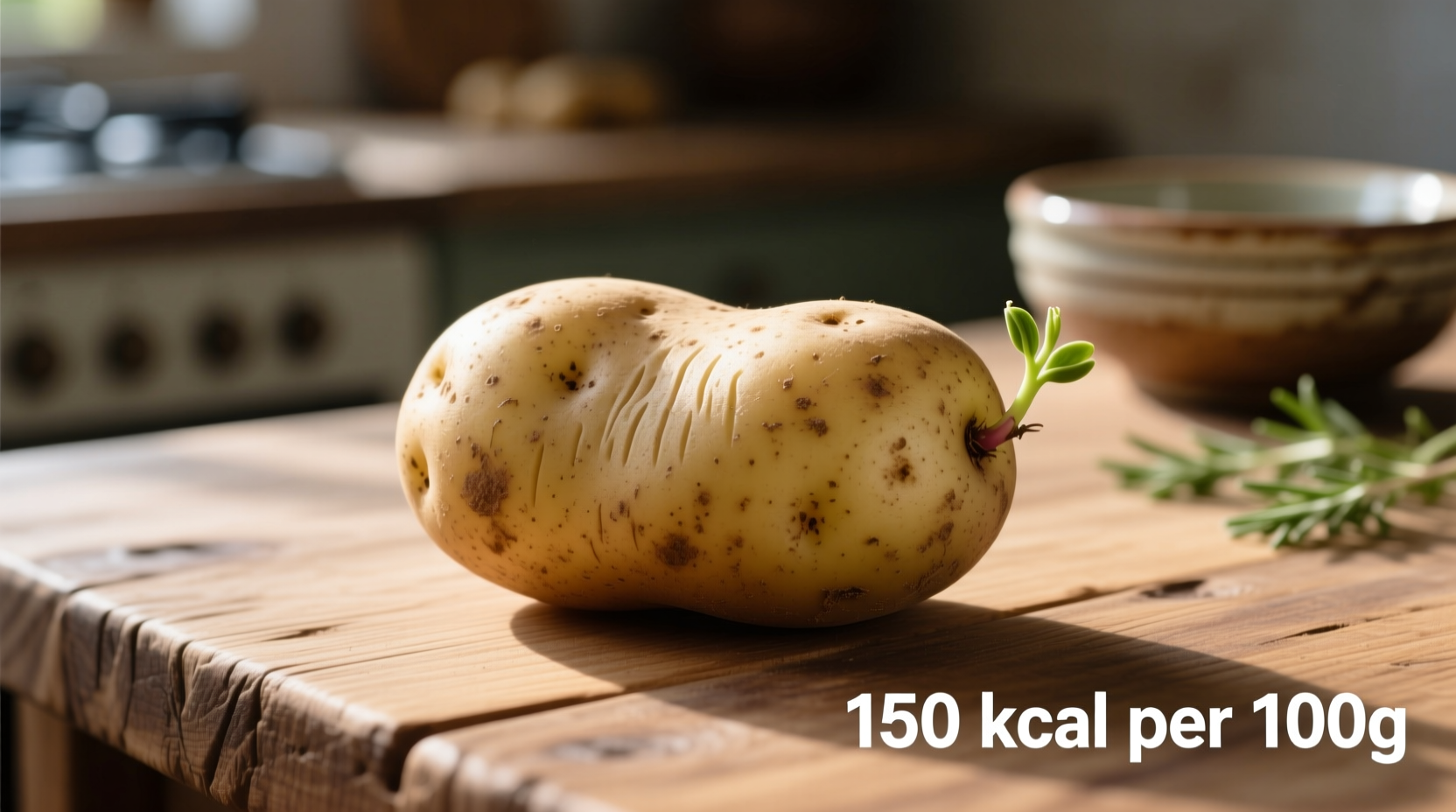Understanding potato calories is crucial for anyone managing their dietary intake while maintaining balanced nutrition. Potatoes often get unfairly labeled as "fattening," but their actual caloric impact depends entirely on preparation methods and portion sizes. Let's explore the science-backed facts that separate myth from reality.
How Potato Calories Break Down by Variety
Not all potatoes deliver the same caloric punch. The variety significantly impacts nutritional content while maintaining similar carbohydrate profiles. The USDA FoodData Central database provides verified nutritional information across common potato types:
| Potato Variety | Calories (per 150g) | Carbohydrates | Fiber Content | Notable Nutrients |
|---|---|---|---|---|
| Russet | 130 | 30g | 3g | High in potassium and vitamin C |
| Yukon Gold | 120 | 27g | 2.5g | Rich in vitamin B6 and iron |
| Red Potato | 110 | 26g | 2.8g | Excellent source of folate |
| Sweet Potato | 135 | 31g | 4g | Exceptionally high in vitamin A |
This comparison reveals that while caloric differences between varieties are minimal, their nutrient density varies considerably. According to research published in the American Journal of Clinical Nutrition, the fiber content in potatoes—particularly when consumed with skin—contributes significantly to satiety and digestive health, making them valuable for weight management when prepared appropriately.
Preparation Methods: The Real Calorie Game-Changer
How you prepare potatoes dramatically affects their caloric impact. The same 150g potato can range from 110 calories to over 300 depending on cooking technique:
- Boiled or steamed (with skin): 110-120 calories - preserves nutrients and requires no added fats
- Baked: 120-130 calories - slightly higher due to water loss during cooking
- Mashed (without additions): 125 calories - becomes more concentrated as water evaporates
- Roasted with oil: 180-220 calories - depends on oil quantity (1 tbsp adds 120 calories)
- Fried (French fries): 300+ calories - oil absorption significantly increases caloric density
The National Center for Biotechnology Information confirms that cooking methods altering potato structure affect both glycemic response and perceived satiety. Boiled potatoes with skin intact have a lower glycemic index than mashed or fried versions, making them a better choice for blood sugar management.
Putting Potato Calories in Dietary Context
Understanding how potato calories fit within your overall nutritional needs requires context. A medium potato represents about 5-7% of a standard 2,000-calorie daily diet, but delivers disproportionate nutritional benefits:
- Provides 25% of your daily vitamin C needs
- Delivers 15% of potassium requirements (more than a banana)
- Contains resistant starch that supports gut health
- Offers complex carbohydrates for sustained energy release
Registered dietitians at the Mayo Clinic emphasize that potatoes become problematic only when prepared with excessive fats or consumed in oversized portions. Their natural composition makes them a valuable component of balanced meal planning when approached mindfully.
Common Potato Calorie Misconceptions
Several persistent myths cloud the reality of potato nutrition. Let's examine the evidence:
Myth: Potatoes cause weight gain
Reality: Research from the Journal of Nutrition shows potatoes don't inherently cause weight gain. In controlled studies, participants consuming potatoes as part of balanced diets experienced similar weight outcomes to those eating other complex carbohydrates.
Myth: Sweet potatoes are always healthier than white potatoes
Reality: Both offer unique nutritional profiles. White potatoes provide more potassium, while sweet potatoes excel in vitamin A. The best choice depends on your specific nutritional needs and how you prepare them.

Practical Tips for Smart Potato Consumption
Maximize the nutritional benefits while managing caloric intake with these evidence-based strategies:
- Cook and cool before eating - Cooling cooked potatoes increases resistant starch content by up to 50%, improving gut health benefits according to research in Nutrients journal
- Always eat with skin - The skin contains nearly half the fiber and significant nutrients
- Pair with protein and vegetables - Creates balanced meals that stabilize blood sugar
- Measure added fats - Use spray oil instead of pouring to control portions
- Choose appropriate portion sizes - A serving should fit in your palm (about 150g)
Professional chefs and nutritionists agree that potatoes' versatility makes them valuable kitchen staples when used thoughtfully. As Antonio Rodriguez notes, "Understanding the chemistry behind potato preparation transforms how we experience this humble ingredient. The same tuber can be a nutrient powerhouse or empty calories depending entirely on our cooking choices."











 浙公网安备
33010002000092号
浙公网安备
33010002000092号 浙B2-20120091-4
浙B2-20120091-4